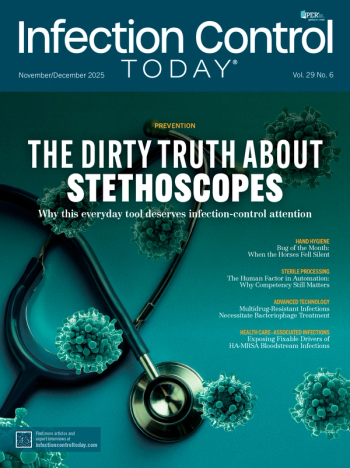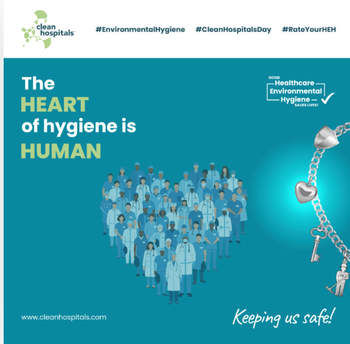
Breaking the Chain of Infection at Surface Level
In April 2022, the World Health Organization released a health alert that cases of acute hepatitis of unknown origin in children had been documented in eleven countries, including the United Statesi. Since then, the number of U.S. states documenting pediatric hepatitis of unknown origin has gone up to 25, with 90% of those patients requiring hospitalization and even five deaths.ii What makes this outbreak even more concerning is that doctors and public health officials have yet to determine the cause. The CDC issued a bulletin indicating that adenovirus was detected in some of the infected children, although not all of them, and it might be responsible for this new critical health concern.iii
Adenovirus is a category of common viruses and usually result in colds or other flu-like symptoms. What can make them extremely difficult to combat is their resiliency in the environment. They can linger on surfaces for up to 30 days and can resist common household cleaning chemicals.iv This is especially troubling with the new rise in cases being reported.
Doctors and health officials recommend that parents make sure their children practice proper hand hygiene to prevent the transmission of disease. However, anyone who’s been around young children and toddlers know that hand hygiene is a developing skill and not one that’s been mastered at a young age. The Journal of the American Medical Association reported that handwashing compliance in hospitals only averaged around 50% in 2021.v It seems that relying on small children to perform a task better and more consistently than medical professionals is not the ideal way to combat viral infections.
What can be done then to help reduce the chances of adenovirus flourishing in a facility? A positive team approach between infection prevention professionals and environmental services or janitorial staff is key to success. Schools, daycares, or any facility working with children should revisit their cleaning protocols with their EVS or housekeeping teams. Because adenoviruses can live on surfaces for extended periods of time, possibly infecting anyone who touches these surfaces, consistent cleaning of high-touch surfaces is critical. This includes doorknobs, light switches, handles, etc.
Other helpful practices include:
- Use an EPA-Registered Disinfectant. One reason why adenovirus can be transmitted easily from surface to person is that they’re often resistant to common household cleaners. Ensure your facility’s EVS teams are using disinfectants registered with the EPA and have documented claims. You can find EPA-registered chemicals on their website
EPA.gov . - Read All Labels and Follow Dwell Times. One of the biggest mistakes cleaning teams make in an effort to gain efficiency is wiping away the disinfectant before it’s had the time to do its job. The active ingredients in cleaning chemicals and disinfectants must maintain contact with a surface for a certain amount of time to actually kill pathogens from the surface. If a disinfectant isn’t allowed to stay on a surface for the required time, or if the chemical doesn’t remain wet on the surface long enough, the disinfecting properties of the chemical is reduced significantly, if not completely.
- Focus on High-Touch Surfaces. High-touch surfaces are those that multiple people touch frequently throughout the day. Examples include doorknobs, refrigerator handles, faucets, etc. In facilities where hand hygiene compliance might be an issue, making sure that these constantly touched surfaces are cleaned and disinfected regularly often becomes critical in breaking the chain of infection.
- Choose Single-Use Tools. When cross-contamination becomes a critical issue, using single-use tools can help significantly. Because the cause of the current outbreak of pediatric hepatitis is still unknown, everything can fall under suspicion as a possible source of transmission. Also, there is currently no vaccine for children to prevent adenovirus. When cleaning surfaces in a critical areas or facilities with children, using
disposable wipes or mops means that cleaning tools haven’t been used to clean germs or bacteria in other settings before. Because bioburden can remain in laundered textiles, switching to single-use tools can make sense during a health crisis.
The coronavirus pandemic changed the world as we knew it. As COVID-19 restrictions continue to be lifted, new variants keep emerging. And as the current cases of hepatitis of unknown origin have shown, other new dangerous viral infections are also on the rise. Creating a safe environment for the most vulnerable citizens, whether they be children in schools or patients in hospitals, by breaking the chain of infection remains a vital goal for all those committed to cleaning for health.
i.
ii.
iii.
iv.
v.
Newsletter
Stay prepared and protected with Infection Control Today's newsletter, delivering essential updates, best practices, and expert insights for infection preventionists.





